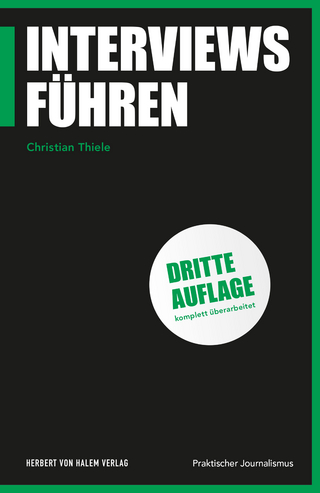
Telling Science Stories
Reporting, Crafting and Editing for Journalists and Scientists
Seiten
2020
Routledge (Verlag)
978-1-138-49059-8 (ISBN)
Routledge (Verlag)
978-1-138-49059-8 (ISBN)
A practical manual for anyone who wants to turn scientific facts into gripping science stories, this book provides an overview of story elements and structure, guidance on where to locate them in scientific papers and a step-by-step guide to applying storytelling techniques to writing about science.
In this book, Martin W. Angler outlines basic storytelling elements to show how and where fledgling science storytellers can find them in scientific output. Journalistic techniques like selection through news values and narrative interviews are covered in dedicated chapters. A variety of writing techniques and approaches are presented as a way of framing science stories in ways that are informative and compelling in different media – from short films to news articles. Practical examples, selected interviews and case studies complement each chapter, with exercises and experimentation suggestions included for deeper understanding. Review questions at the end of each chapter cement the newly gained knowledge to make sure readers absorb it, with links to articles and online tools inviting further reading.
A valuable resource for students of journalism and science communication as well as professional journalists, scientists and scientists-in-training who want to engage with the public or simply improve their journal papers. This book is a one-stop shop on science storytelling with a clear focus on providing practical techniques and advice on how to thrive as science writers and communicate science in all of its complexity.
In this book, Martin W. Angler outlines basic storytelling elements to show how and where fledgling science storytellers can find them in scientific output. Journalistic techniques like selection through news values and narrative interviews are covered in dedicated chapters. A variety of writing techniques and approaches are presented as a way of framing science stories in ways that are informative and compelling in different media – from short films to news articles. Practical examples, selected interviews and case studies complement each chapter, with exercises and experimentation suggestions included for deeper understanding. Review questions at the end of each chapter cement the newly gained knowledge to make sure readers absorb it, with links to articles and online tools inviting further reading.
A valuable resource for students of journalism and science communication as well as professional journalists, scientists and scientists-in-training who want to engage with the public or simply improve their journal papers. This book is a one-stop shop on science storytelling with a clear focus on providing practical techniques and advice on how to thrive as science writers and communicate science in all of its complexity.
Martin W. Angler is a science journalist with a background in technology and journalism.
1 Introduction
2 Story Elements
3 Discovering Science Stories
4 Narrative Structure
5 Story Formulas
6 Language and Style
7 Screenwriting Techniques
8 Literary Techniques
9 Writing and Revising
Appendix: The Scientific Method
| Erscheinungsdatum | 02.04.2020 |
|---|---|
| Zusatzinfo | 9 Line drawings, black and white; 5 Halftones, black and white |
| Verlagsort | London |
| Sprache | englisch |
| Maße | 156 x 234 mm |
| Gewicht | 428 g |
| Themenwelt | Sozialwissenschaften ► Kommunikation / Medien ► Journalistik |
| Sozialwissenschaften ► Kommunikation / Medien ► Medienwissenschaft | |
| ISBN-10 | 1-138-49059-8 / 1138490598 |
| ISBN-13 | 978-1-138-49059-8 / 9781138490598 |
| Zustand | Neuware |
| Haben Sie eine Frage zum Produkt? |
Mehr entdecken
aus dem Bereich
aus dem Bereich


